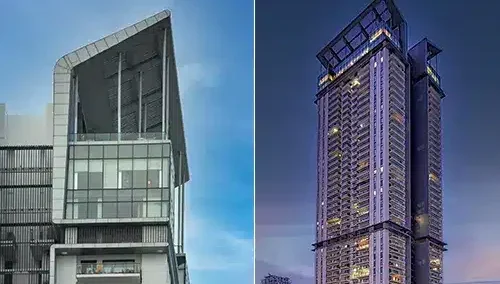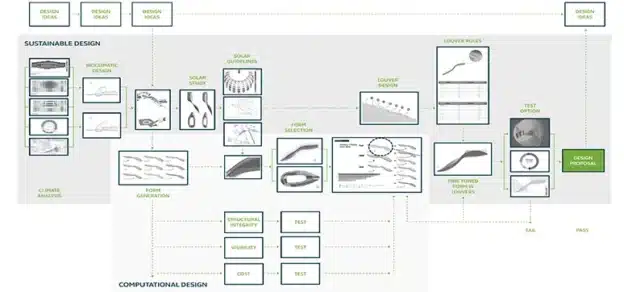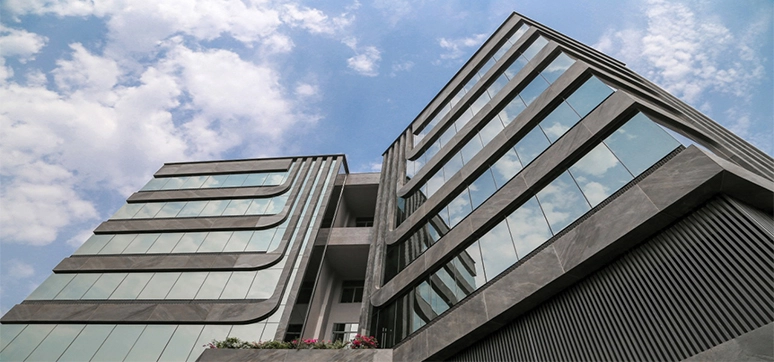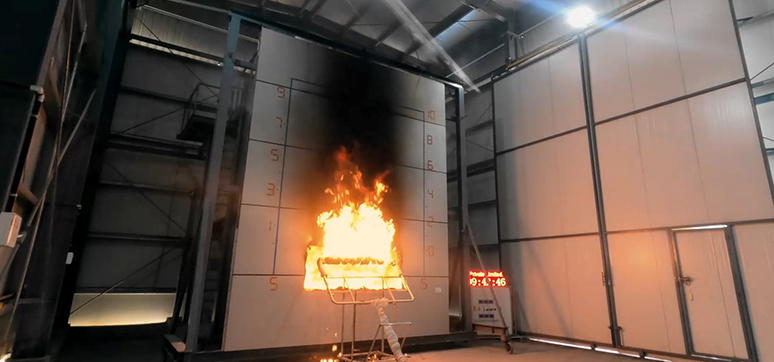According to the Society of Façade Engineers (SFE), façade engineering is the art of resolving aesthetic, environmental and structural issues to achieve the enclosure of habitable space. For countless years, buildings have been constructed primarily with all walls carrying an approximately even share of the load. With the development of structural steel and reinforced concrete, architects now had more flexibility to clad exterior walls with aesthetically pleasing materials, instead of unsightly concrete slabs. That is when the façade and curtain walls began to receive more time in the spotlight.
Challenges In The Facade Industry
Architectural design is an extremely competitive environment, with each project aiming to outdo the previous and each enterprise wanting their own distinctive look. In most industries, variety often leads to prosperity. But in the facade industry, it has the opposite effect. One of the largest challenges in the façade fabrication industry is the lack of standardization. Internationally, there are no standard criteria for façades by which manufacturers can compare themselves to. Ideally, in a manufacturing enterprise, you want one machine or one standardised production flow that will mass produce your product with as little overhead costs as possible.
 The market challenges faced by the facade industry
The market challenges faced by the facade industry
Unfortunately, it will seldom be the case that one building will have the same design as another. In other words, there is no one-size-fits-all mold for façades. Each project needs a new design, new development process, and a slightly different manufacturing process. Façade fabrication is an industry where innovation is crucial for a successful undertaking. Let’s have a look at some of these.
Façade engineering is challenging because it bridges the gap between the more traditional disciplines that are architecture, structural engineering, and practicality. Aesthetics are also a massive consideration when creating a façade design. Another added dimension to the complexity is the fact that façade engineering includes reconciling the effective use of doors, windows and a variety of materials into a single, cohesive building front. The first issue that we encounter is that a considerable portion of investment cost in a construction project is taken up by wastage. And the largest thief, in this case, is the design, manufacturing, and installation of façades.
Another challenge is that there is increasing pressure to come up with more and more energy-efficient and sustainable designs. This often calls for the use, or development, of new materials. With architects constantly pushing the boundaries of engineering, going higher and higher, and even underwater, this puts an increasing demand on the creativity of engineers in the facade industry. It is a fine mixture of engineering, innovation, and art. Thermal loads also present a challenge, especially in larger installations. Explosive loads are also a reality we need to consider in the extremely volatile nature the world finds itself.
Why Aren’t Companies Making Profits?
 The way to increase profit
The way to increase profit
Façade fabrication involves so many different aspects of a huge variety of construction fields. This already puts it at a disadvantage compared to other fields of engineering. As mentioned before, the lack of standardized products makes it hard to create one development and manufacturing model. Clients often want a unique design and tend to shy away from a standard product; they don’t want the guy down the street having the same look as theirs. All façades need to be of the highest quality and be able to deal with dead loads, deflect forceful winds, handle seismic activity, account for thermal load, resist water penetration and be of such strength to handle the expected stresses with ease. These requirements make it difficult to produce a high quality product that can be offered at a competitive price.
Measures To Strike Back!
With all these odds stacked against the facade industry, what are some practical, effective measures that can be implemented to minimise waste and increase productivity and efficiency? One measure, that has proven to be effective in maximising efficiency, is called lean manufacturing. This approach was pioneered and refined by the Toyota Production System. Their advancement from a small company to one of the world’s leaders in the automotive industry has made them a prime example to study. There are mainly two ways in which lean manufacturing is implemented. One way is by the identification, and thereby elimination, of waste. The effect of this is that waste is reduced. On the flip side of the coin, production time decreases and quality increases.
The second approach, as implemented by Toyota Production System, is to increase the “flow” of the work; to increase the smooth transition from one phase of production to another. Some of the techniques used in this method include “pull production” and production leveling. How will lean manufacturing improve the returns in a façade, curtain wall or window, and door manufacturing environment?
 Lean manufacturing improve the returns in a façade, curtain wall or window, and door manufacturing environment
Lean manufacturing improve the returns in a façade, curtain wall or window, and door manufacturing environment
Some areas of wastage are:
• The transportation of products that are not actually required
• People or equipment moving more than required to process the product
• Waiting for the next production step or pausing due to interruptions of production during shift change
• Producing more than demand
• Over-processing due to poor design of tools or processes.
• Overworking workers
In the facade industry, this approach can yield large reductions in waste and improve efficiency. Keeping stock to the minimum feasible amount improves the flow of the process. This is called “just-intime” production or pull-production. Instead of manufacturing a large amount of stock and having it sitting in a warehouse, the best approach is to have a steady output every single day. This allows workers to get specialised in their field and avoids overworking them to compensate for a large project. The less stock you have on hand, the less you will spend on storage. This also means you will need lesser staff to handle the stock. It could happen the demand in the market changes drastically, or new regulations force you to change your product design. Should you have a large stock of products just sitting in your storage that is a massive waste!
A practical method to implement is the one-piece flow. What it means is that there is a continuous flow from the start to end of the processing. For example, in the case of a steel or aluminum product, the material can go straight from the measuring/ cutting, to the assembly stage. From there it can go straight to finishing, quality control or any other part of production depending on the specific product. And this is preferably on a continuous production line to avoid moving materials from one place to another. Optimising floor layout is also a crucial factor that can greatly improve efficiency and drive down production time as it decreases travel considerably. If there is a lot of waste left over after production, effort must be put into investigating why. Say there is a lot of wasted aluminium/steel profiles after production, find out why. Is there a way to utilise the leftovers? Can it be eliminated completely, or at least reduced, by changing the raw materials used? Being creative goes a long way in identifying where improvements can be made. Implementing lean manufacturing is a process. The key is being consistent, persistent and creative.
One other goal that enterprises should strive towards is continual improvement. Although good results may be obtained initially, if you do not continue improving your product or your process, you will start losing ground again. Continually strive towards technical prowess, using automation where you can, and use technology as much as economically feasible, with long-term benefits in mind.
What Are Some Expected Results?
 Going “lean” is a very cost-effective method to drive down costs and time
Going “lean” is a very cost-effective method to drive down costs and time
Depending on the specific enterprise and size of the undertaking, reduction in costs can be anywhere from 15-80%. Manufacturing time is usually the area where the biggest improvement can be seen, with up to a 90% reduction! Even if the improvement percentage is in the lower range, this still represents a huge benefit to an enterprise, regardless of the size. Although each strategy may seem insignificant, when implemented together and closely monitored, the savings can be huge! In the competitive market nowadays, it is crucial to be a cut above the rest. Granted, there are other strategies that can be explored as well, going “lean” is a very cost-effective method to drive down costs and production time, and increase profits!















